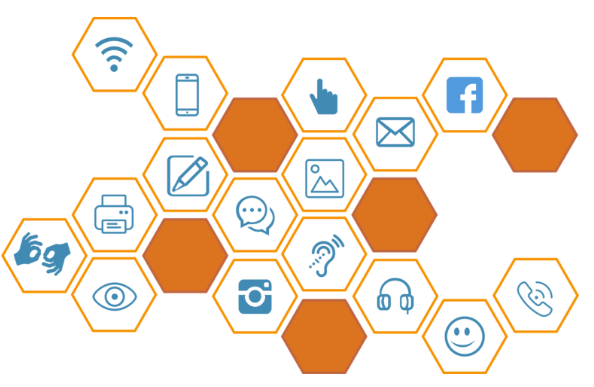3.6: Using the Right Communication Channel
- Page ID
- 4111
What you’ll learn to do: Determine the appropriate communication channel for a specific type of message

How do I match the electronic communication channel with the audience and the message? Given all of the techniques we have discussed in this module, what is the most effective technique based on the situation available today?
learning outcomes
- Determine the appropriate communication channel for a specific type of message
Advances in technology have opened the door to a myriad of vehicles for communication in business today. In written business communication, the idea and purpose of the message is the most important, closely followed by how it is written, and then by what means is it routed. Harmonizing these three characteristics will determine how effectively the message is received.
Since we have already discussed how we write various digital messages, we will now focus on the third element—what electronic business communication channel should be utilized for a given message. Here are several criteria to keep in mind when determining which communication channel to use:
- Who is the audience?
- How important is the message?
- What is the level of confidentiality?
- How much interactivity is needed?
- How much information needs to be conveyed?
We always start our message creation with the audience in mind—for what we say, how we say it, and what communication technique we use. A quarterly corporate performance report is probably not texted by the CFO to all employees of a company. Sending a multimedia slide deck to request time off to your manager is likely overkill. It would would not be appropriate for someone in the HR department to use IM to contact management regarding the résumés of the candidates to be interviewed for the new VP of Marketing job. These are extreme examples, of course, but they all illustrate the same basic point.
practice question
An important company VP is resigning his position. What is the best way to communicate this organizational change internally and confidentially?
- an email memo
- internal social media
- an IM to all employees
- Answer
-
internal social media
Although the criteria above are listed as separate items, they need to be considered together when choosing appropriate communication channels. For example, if you need to get a quick question fired off to a member of your team on a joint project consider the following: First, the recipient is a teammate and you probably communicate frequently with them. Second, the message is a quick question that needs to arrive right away to keep the project on track. Third, the information is probably not top secret; and fourth, you need them to be able to get back to you ASAP with a response. By cycling through several of our listed criteria, we would arrive at the conclusion that an IM would be the best way to get the job done.
What about the case of a message that needs to be sent to your manager to inform her about a new development on an upcoming large business deal? First, since your audience is your manager, you would want to use proper, formal and complete language. Second, the message is important—it will probably be circulated to higher levels of management and will need to serve as a record of the status of the deal. Third, there may need to be a degree of confidentiality because of the nature of the information being discussed, especially if it is a public company. Finally, the message will probably not require a rich level of interactivity, as it is intended to inform a limited audience. For this example, an email would probably be the best communication channel.
examples
Another scenario: Your team is the first to work together with a new distribution partner on an important large client. After you have spent months working out the kinks of an effective process between the teams in both companies, your manager informs you that another group in your company will begin to work with this new partner on another joint customer. You are asked to bring this new group up to speed on how to work with this new partner. Based on our criteria above, would we send the new group an IM, an electronic memo, an email, a report, or utilize a blog or wiki?
Think about the five criteria of considering the best channel to use: The audience, importance of the message, level of confidentiality, level of interactivity needed, and amount of information that needs to be conveyed. Write your thoughts below:
Now that you have taken some time to consider the scenario and write down your thoughts let’s examine the facts. The audience is an internal group, the information is important and confidential, no interactivity is really required, and there is probably a decent amount of documentation to be recorded. This communication would be best presented as a wiki residing in an internal intranet for broad access, but only by company personnel.

